How much information is there in a photograph? There is always more than you think. I learned recently that when miltary intelligence officers receive their training, they are given a photo that does not seem to contain much detail but they are required to produce twenty pieces of intelligence from it: Who is in the picture? When was it taken? What mood is the subject in? Why is this? Who is he with? Where is he? What shoes is he wearing? Where do you buy clothes like the ones he is wearing? And so on. Asking the right questions of the information we are presented with helps to extract more detail than seems possible at first, and the more information we have, the easier it is to find out about something.
So time to put this into practice with a little Quiztime challenge. On 25th November Julia Bayer posted this photograph and asked what time it was taken at:
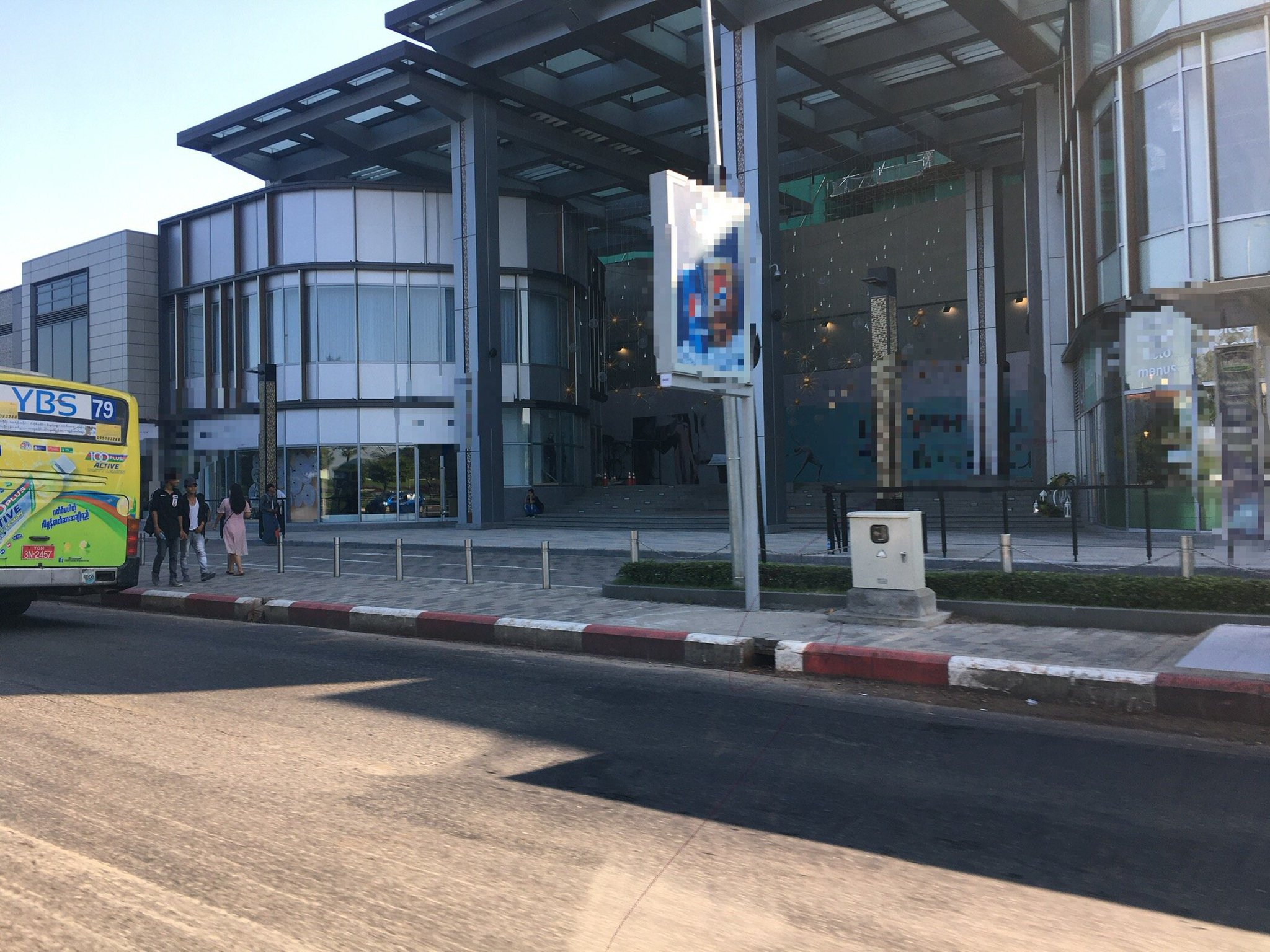
So this is a when question, but in the absence of any EXIF data or visible clocks, the only way to calculate the time will be with the sun’s shadow. Julia gives us the date (Thursday 21st November) but to calculate the time from shadow length we need to know the location. Before we can say when we need to find out where. So how to start geolocating this image? There are a couple of different techniques we can employ, but I thought this was a good opportunity to play the military version of Twenty Questions. Can we extract twenty pieces of information from this photograph to help get started? Let’s see:
1. Bright sunny weather.
2. Modern building, glass and metal construction.
3. What kind of building is it? Not residential or industrial, probably commercial or retail. Doesn’t look like a grand public building (court, parliament etc) either.
4. Some construction work going on at the rear of the building.
5. “Menu” sign on the right hand side – probably a cafe or restaurant.
6. Large Pepsi sign outside.
7. Located opposite an open green space (park? public gardens?) next to a road, judging from the reflection in the left window.
8. Some kind of phone or electrical maintenance box on the pavement.
9. Yellow bus with YBS logo – what does YBS stand for?
10. Bus service is number 79.
11. The writing on the bus is in a non-Western text.
12. Advert for “100 Plus Active” soft drink – where is this sold? There is a Facebook logo on the ad – does this company have a Facebook page that could tell us more about where they are in the world?
13. Bus licence plate format: white text on red background, 3N-2457. Some smaller writing above this.
14. Red and white kerbstones. Which cities/countries have roads like this?
15. Separate road or parking area in front of the main building?
16. People in the photo appear to be Asian, possibly South-East Asian.
17. Clothing worn by people in the picture and the green trees suggest a warm climate.
18. Some kind of shrine/memorial on the right side of the steps.
19. One person sat on the steps outside the building. Not many people in the street and not much traffic – does this suggest an earlier time of the day? Is this building even open yet?
20. Mannequins in the window of the building. Some or all of this building is for retail.
That’s a good start – there is enough information here to find out exactly where Julia was just by developing some of these pieces of information a little further. 100 Plus Active Juice is sold only in a few mostly South-East Asian countries (point 12), and a Google search for YBS + bus (point 9) will tell you that this bus is owned by the Yangon Bus Service in Myanmar.
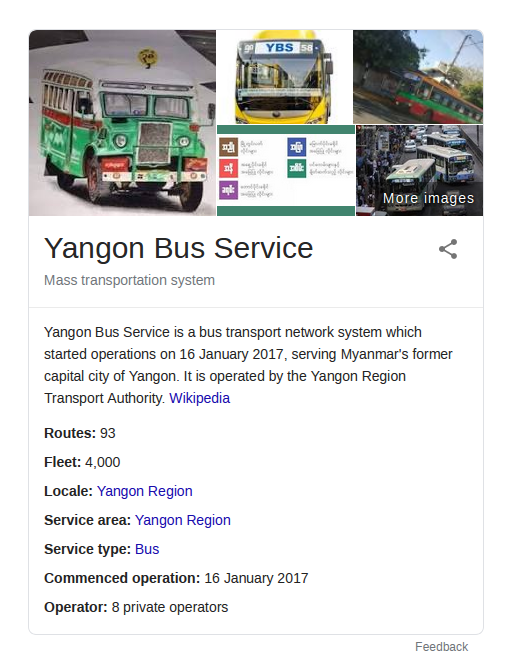
World License Plates will then also confirm that some tax free vehicles in Myanmar do have registration plates in the same format as the bus in the picture (13):
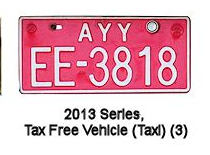
A follow up search for “Yangon bus route 79” (combining points 9 + 10) even gives us a map of the bus route. Julia’s location will be somewhere along this route:

It’s best to pause for a second before getting out Google Maps or Street View and following the bus route until you find a matching location. You could find the location this way, but it will take a long time and also be quite boring. Also the Street View or 3D building coverage of Yangon is a little patchy compared to a lot of other cities which makes life harder. Besides there are other pieces of information that we extracted from the photo that we’ve haven’t used yet.
Research The Photographer Too
Before looking at how we can use the other information, it’s worth mentioning another technique you could have used to find that Julia was in Yangon. Julia does not broadcast her every move on Twitter, so it is not easy to guess where she might be – but what about the people she was with on 21st November? People may have a small digital footprint, but what about their digital shadow? What do other people reveal about Julia? We can actually use Twitter to get an idea of where Julia was. Using Twitter’s Advanced Search we can set time parameters and see not only what Julia posted, but also anyone who tagged her. First we can choose to see all tweets that Julia was tagged in:

Next we can set a specific date range. Julia posted the quiz on 25th November, so we can set quite large parameters to see everyone who tagged her in the ten days leading up to then:
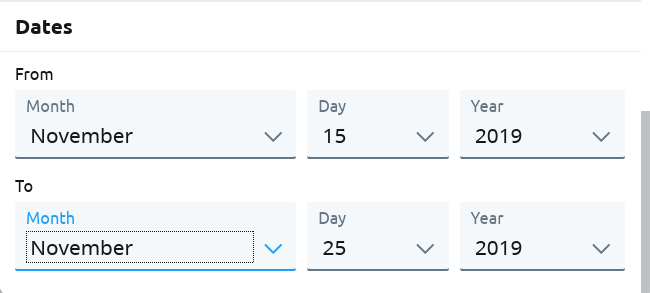
Now we can see not only that she was in Myanmar, but also what she was doing, and who she was with:
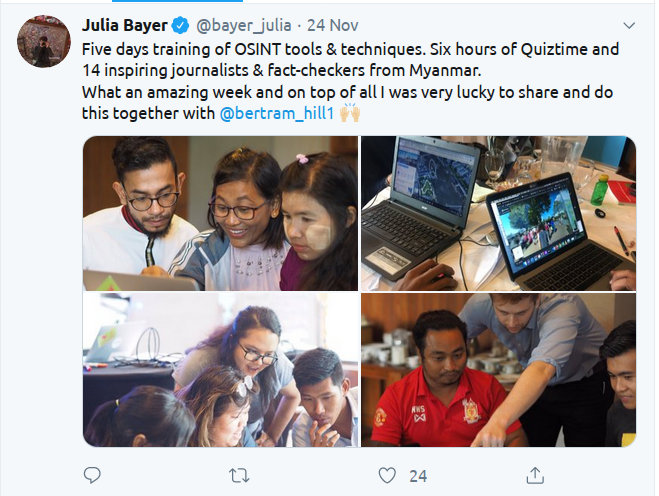
Julia says she was with Bertram Hill. So can we learn anything relevant from Bertram’s account? Yes we can:
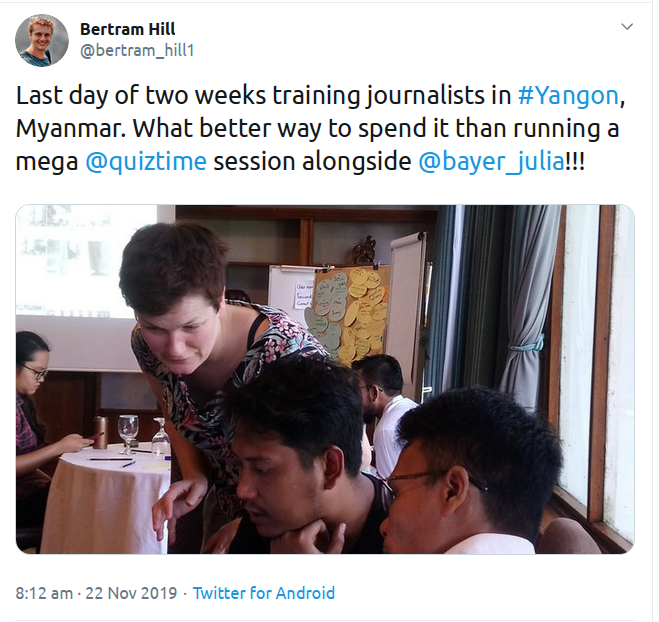
So now we have a picture of Julia doing her training, but Bertram also confirms that the city was Yangon.
So we can use two different methods to find the location of the photo. We can either research the photo itself, or research the photographer. Both eventually lead us to Yangon as the correct location, but we learn very kinds of information along the way. Quiztime is just for fun and practice of course, but you can see that in a real investigation using different methods can give very different kind of results. There is nothing to stop you using multiple approaches to a problem of course (and I haven’t even mentioned reverse image searching as a way to find the location – but how much would we ever learn if everything was a one-click answer?)
Finding The Correct Location In Yangon
Now we know the city is Yangon, and that the correct location is somewhere along the 79 bus route, but we can use some of the other observations from the photograph to refine the search first. Yangon is a huge city with a population of over 7 million, and the 79 bus route seems to cross most of the city, so to check it all requires a lot of effort. Let’s have a little confidence in our initial observations though. We’re looking for a modern building (point 2), it’s probably used for retail or commerce of some kind (points 3 and 20), there’s still some ongoing building work at the rear (point 4) and it’s located on the opposite side of the road to a large green space, possibly a park (point 7).
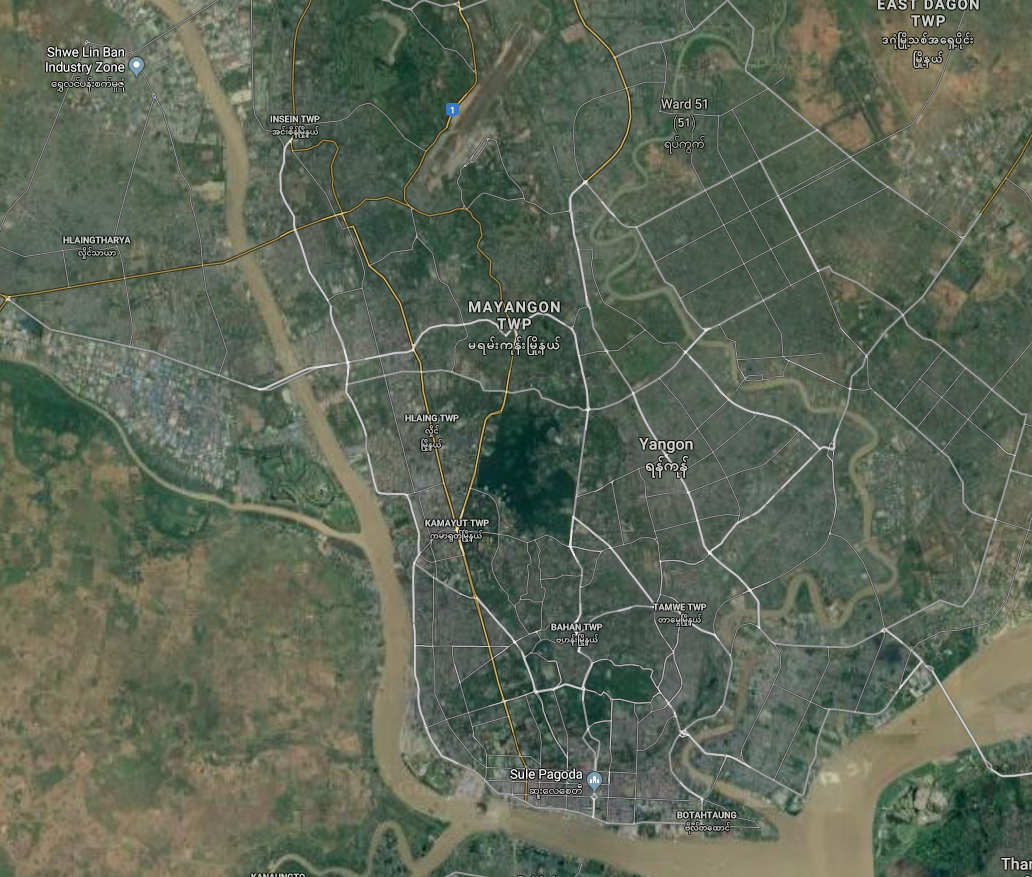
By looking for a location that matches all these criteria we can decide where to focus in for a more detailed search. Searching the entire 79 bus route manually would just take too long and be very boring, so it’s best to avoid it if possible.
To show what I mean, look at this high level view of the early part of the bus route in the northwest of the city:
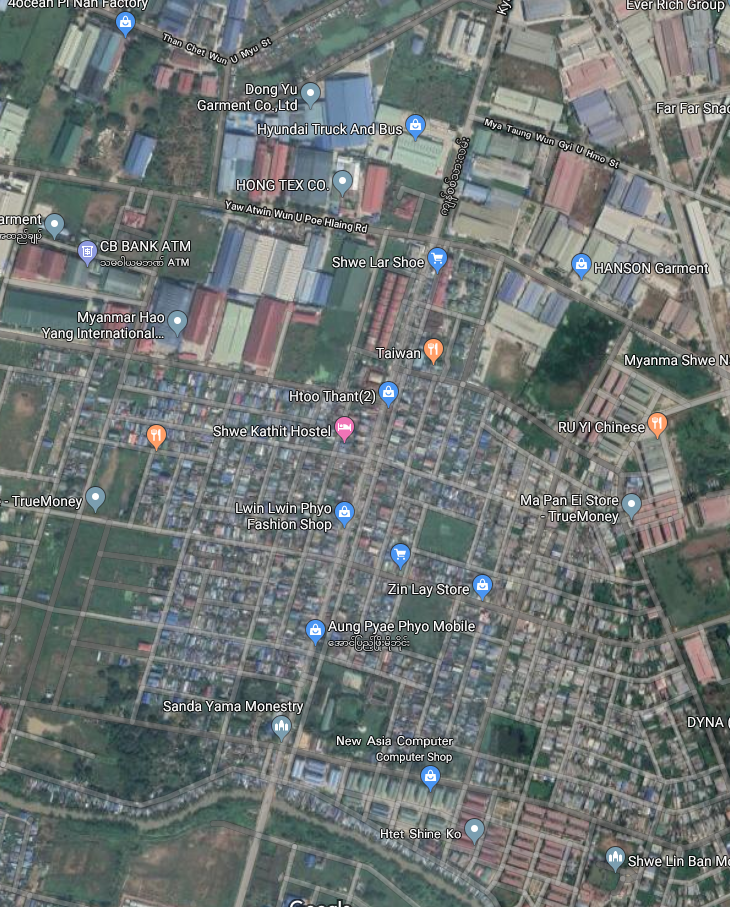
There are some green areas – but what is the land use here? Does it look like the place a modern retail construction site would be? It seems unlikely. The land use is mostly small residential properties and industrial buildings. There are no buildings like the one in the original picture, so this area can be discounted without any further checking.
Another section of the bus route also fails to meet the criteria, so we can move on and ignore it:

Continuing along the bus route, still at quite a high level, there is suddenly a new looking building that stands out. There’s also some construction at the rear (point 4). It isn’t opposite a park, but it is opposite a well-tended green area of sorts (point 7). The nearby land use is also much more in keeping with retail/commerce rather than housing or industry.
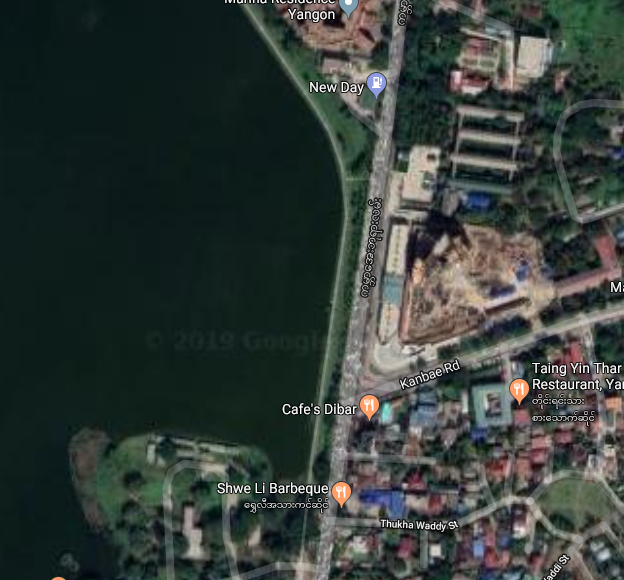
Now we can finally get out Street View for a more detailed check:
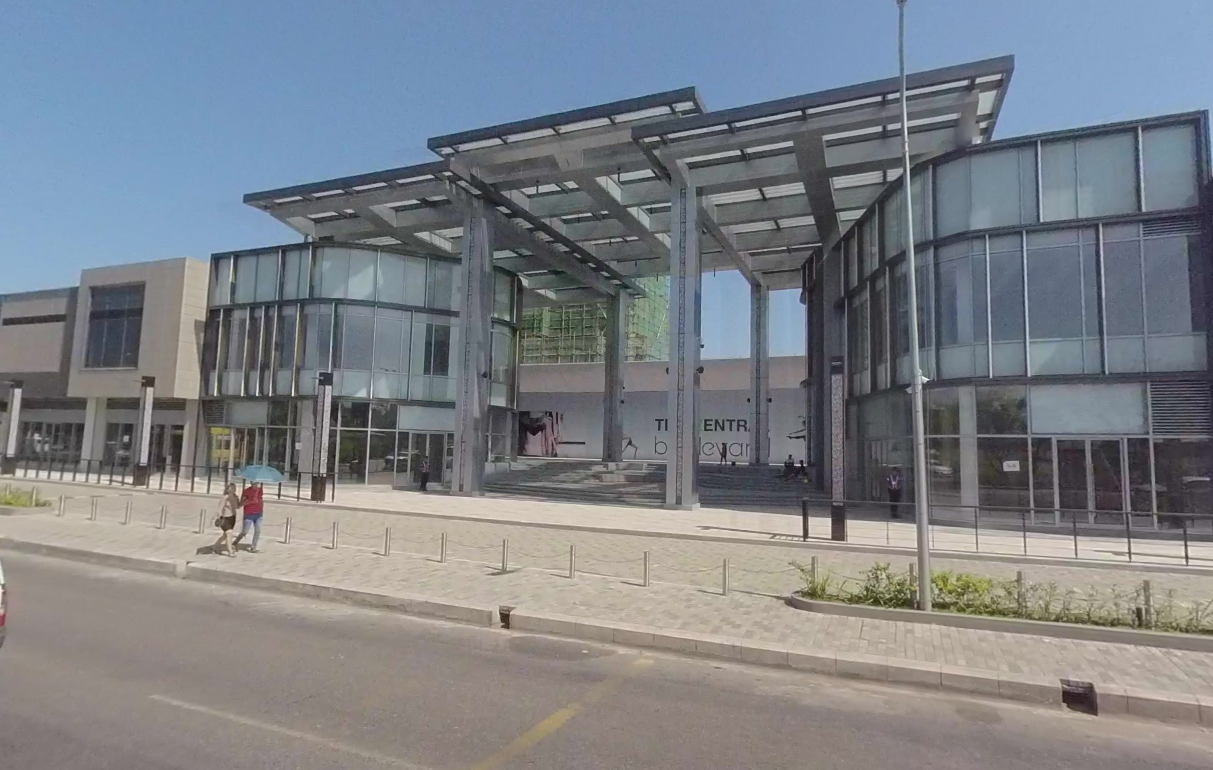
Finally! The correct location is The Central Boulevard in Yangon.
Finding The Time
So now we know the date and the location, we can use Suncalc to work out the time. I actually got this wrong by a couple of hours the first time round (rushing too much and not checking first), but by checking the shadow length and moving the sun slider to match the shadow position in the photo, it is possible work out that the local time was approximately 08:40 when Julia took the photo.
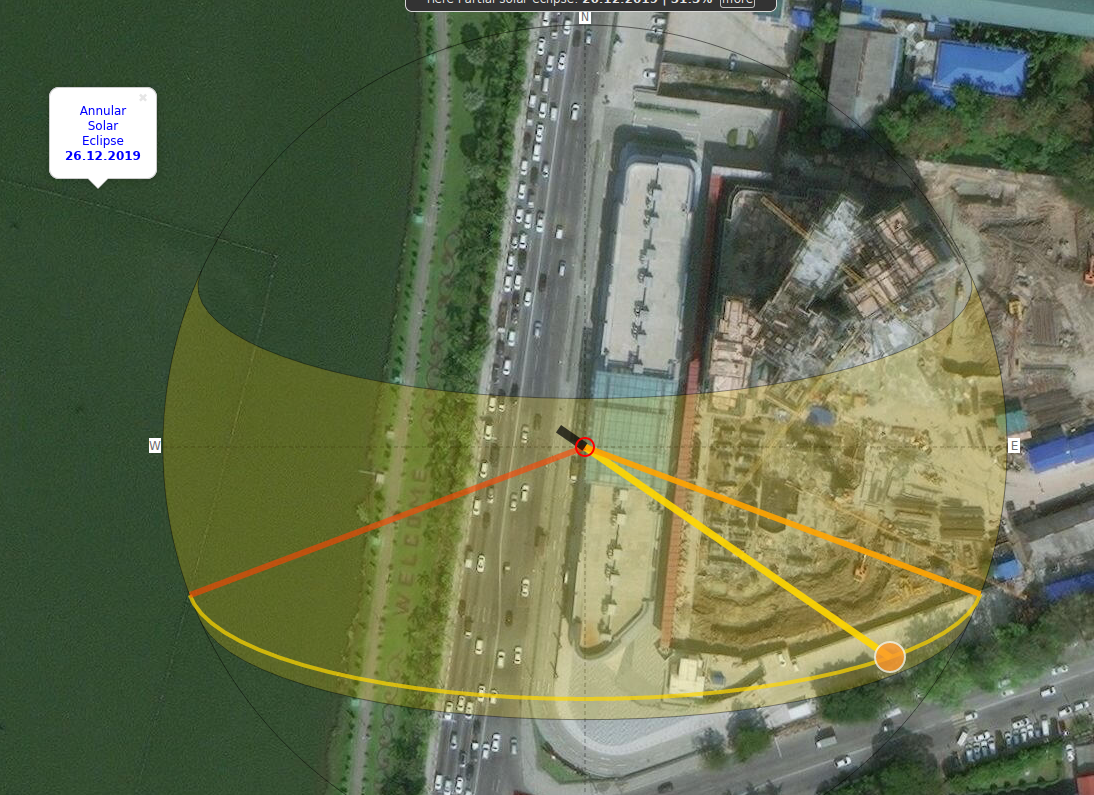
For a much clearer explanation of the time calculation in this example, I recommend reading this Twitter thread from Verso.
Bonus Round
If you happened to notice this little detail in your searching, it was of great help for Julia’s quiz that took place a week after this one:

Yangon is the former capital of Myanmar. So when Julia said this building was in the old capital, there was a good chance she was referring to Yangon once again:
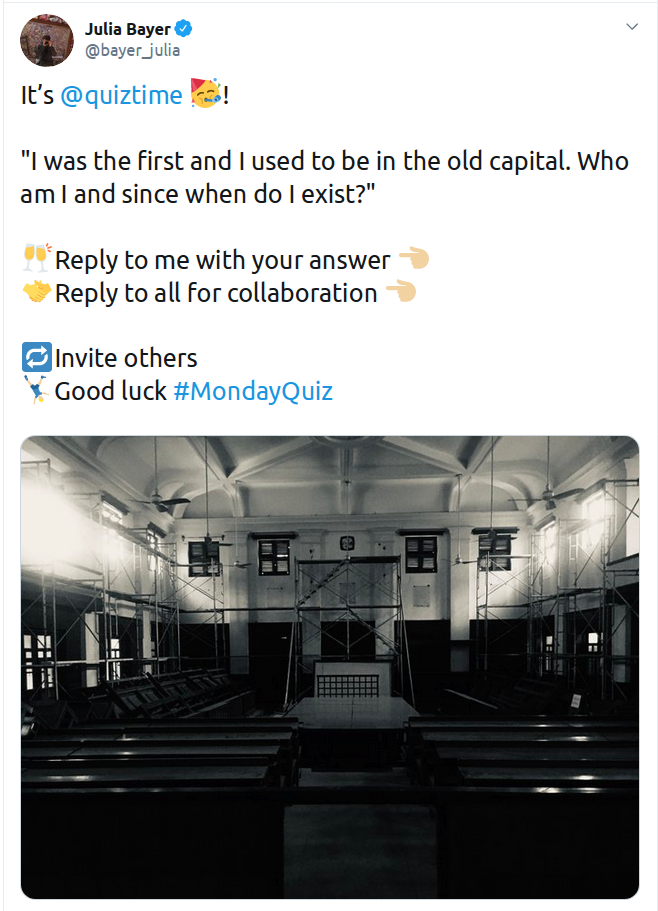
What does the building look like? Unlikely that it’s a church. It looks like a parliament or assembly building of some kind that is no longer in use. A quick Google Image search for “Yangon + former parliament OR assembly” brought back this photo of the old Chamber of Deputies:

And a little Wikipedia follow up found this picture of the building when it was in use:
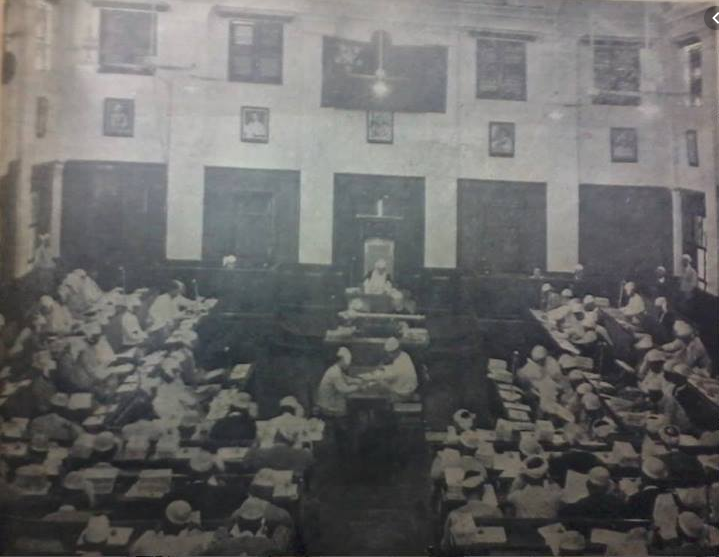
For more Quiztime posts click here.
